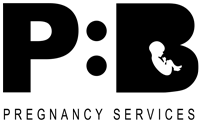Mastitis is a common inflammatory condition that can occur in women who choose to breastfeed. It can be painful and sometimes leads to infection if not treated promptly. It is important to make sure that latching and attachment is done correctly to avoid mastitis occurring.Women can benefit from the help of a supportive network to develop the correct technique from early on in the breastfeeding journey.Avoiding mastitis
Avoiding mastitisThere are many things a woman can do to try to avoid mastitis. The correct attachment is very important, as mentioned above. Also, it can help to avoid letting the breast become over full or engorged. Feeding often can help. Blocked ducts are often an early sign that mastitis could be developing. A hard lump that is tender to touch often signifies a blocked duct. This can be helped by massaging the hard area towards the nipple, preferably under a warm shower to help with any pain.
Often it feels right to avoid feeding on the side with a blocked duct, but in fact, a woman should keep feeding often on the painful side to keep milk moving through the ducts. It should resolve itself within a few days, but if not, a GP or breastfeeding consultant would be able to advise. Another aspect to consider in avoiding mastitis is when choosing to stop breastfeeding. This should be done slowly and gradually so the breasts have time to adjust. Stopping suddenly could very likely lead to mastitis as the
There are many things a woman can do to try to avoid mastitis. The correct attachment is very important, as mentioned above. Also, it can help to avoid letting the breast become over full or engorged. Feeding often can help. Blocked ducts are often an early sign that mastitis could be developing. A hard lump that is tender to touch often signifies a blocked duct. This can be helped by massaging the hard area towards the nipple, preferably under a warm shower to help with any pain.
Often it feels right to avoid feeding on the side with a blocked duct, but in fact, a woman should keep feeding often on the painful side to keep milk moving through the ducts. It should resolve itself within a few days, but if not, a GP or breastfeeding consultant would be able to advise. Another aspect to consider in avoiding mastitis is when choosing to stop breastfeeding. This should be done slowly and gradually so the breasts have time to adjust. Stopping suddenly could very likely lead to mastitis as the breasts continue to make more milk.
Have I got mastitis?
Mastitis can be a painful condition. Your breast may feel very sensitive and more often than not, the sore area will become red.Flu-like symptoms are typical too, for example, shivering and achy joints. Paracetamols can be taken to help with pain relief.
What should I do?
You should contact your GP if you suspect you have mastitis. In addition, feed your baby regularly on both sides to help to keep the milk moving in your breasts. It may help to express your milk as well in order to take some pressure off. Try to rest and keep your fluid intake up. You can use a warm pack to help soothe the area too, or alternatively, an ice pack for a short period after feeding to relieve the area. Try to massage the area too to help remove any blockages.
Need more information about Mastitus?
Why not contact us using the form below and we will get back to you as soon as possible…
Error: Contact form not found.








